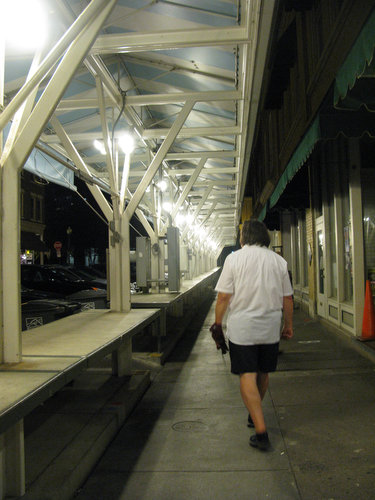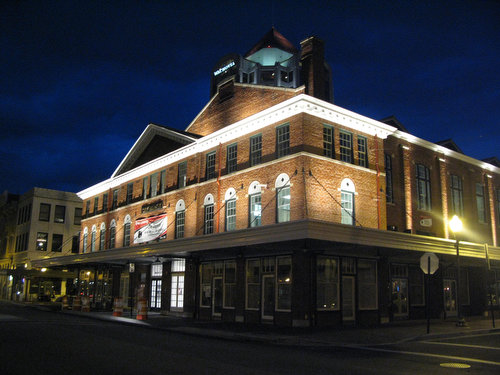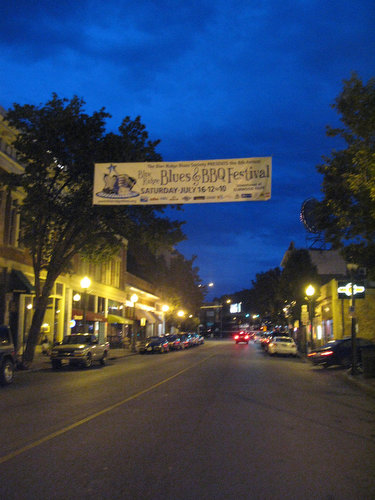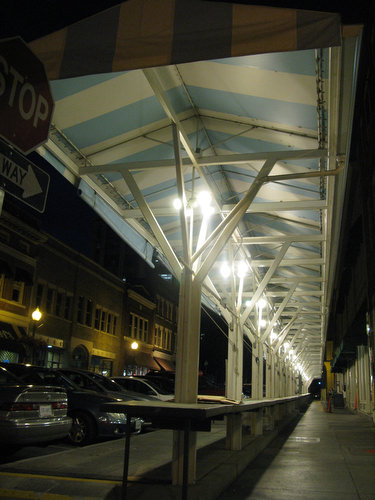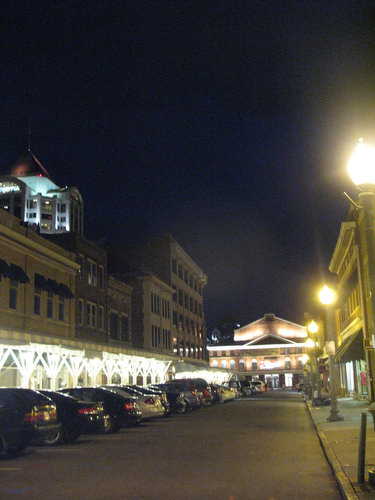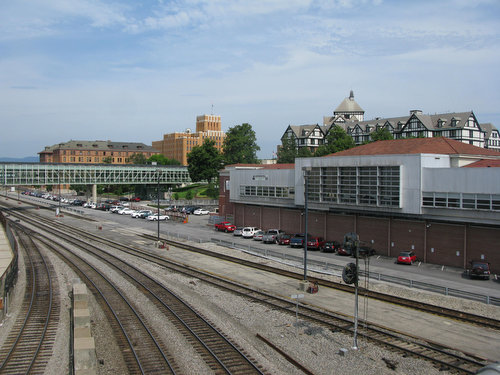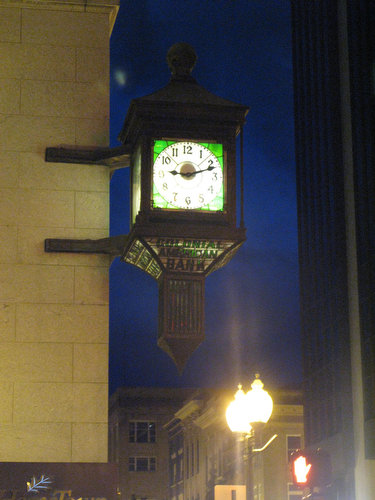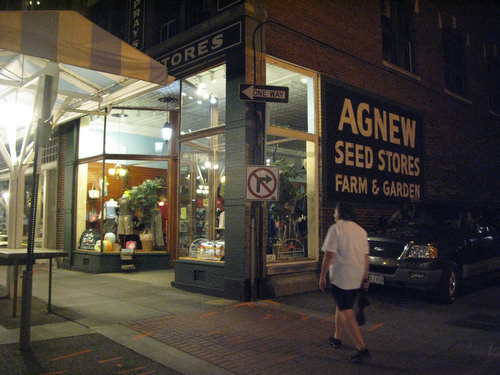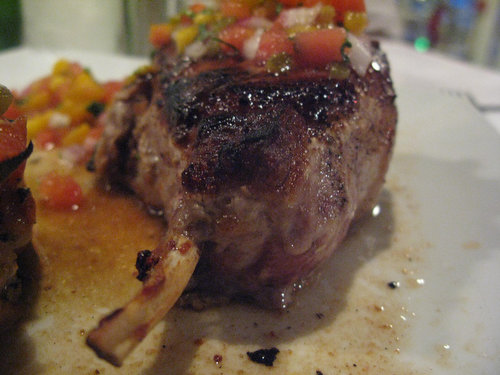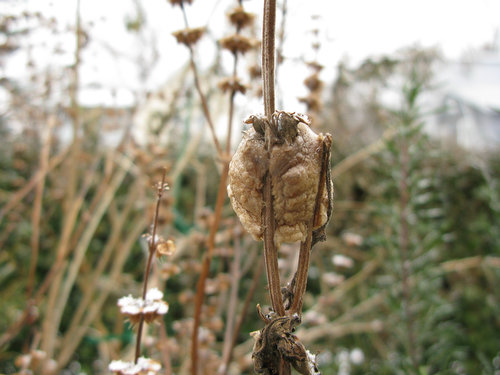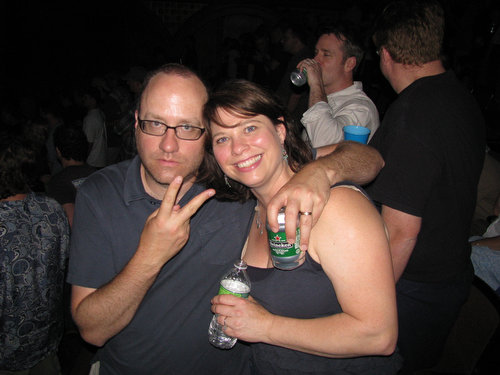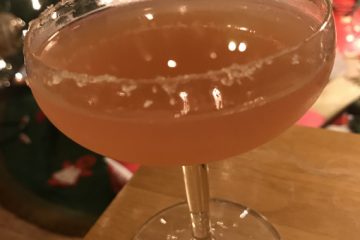A big storm was rolling into Roanoke the night we stayed there, and it made for a beautiful sky.
But Roanoke is very pretty to begin with. It was founded in the 1850s, and many buildings have Victorian-era architecture. And there are a surprising number of cultural destinations in Roanoke, too: the Taubman Museum of Art and the O. Winston Link Museum, among others.
There’s also a terrific set-up on Market Street, right in the center of downtown. Along the sidewalks are covered tables with water and electricity — all made for local farmers and marketers. They back their trucks up on the street and display their wares along the table-lined sidewalks.
Rather brilliant, isn’t it? A little more on Roanoke, after the jump.
Roanoke was originally named Big Lick because of the salt deposits near the Roanoke River. Thank goodness they changed the name.
Roanoke has always been a stop on a well-traveled route. According to Wikipedia, it was a stop on the Great Wagon Road, which ran along the Appalachian valley from Pennsylvania to Georgia. Later, it became a great railroad hub, home to what eventually become the Norfolk & Western Railway.
Here’s a photo from the following morning:
According to Wikipedia:
Norfolk & Western was famous for manufacturing steam locomotives in-house. It was N&W’s Roanoke Shops that made the company known industry-wide for its excellence in steam power. The Roanoke Shops, with its workforce of thousands, is where the famed classes A, J, and Y6 locomotives were designed, built, and maintained. New steam locomotives were built there until 1953, long after diesel-electric had emerged as the motive power of choice for most North American railroads. About 1960, N&W was the last major railroad in the United States to convert from steam to diesel power.
More on locomotives in the next post, too.
I didn’t get a photo of it, but Roanoke is also known as the Star City for the enormous Mill Mountain Star that is on the mountaintop above it.
It is the world’s largest freestanding illuminated star: 88.5 feet tall with 2,000 feet of neon.
We stuck mostly in the immediate downtown area, but enjoyed walking around and browsing. For a small city, Roanoke has a lot going on. We’ll show you more, tomorrow, too.

